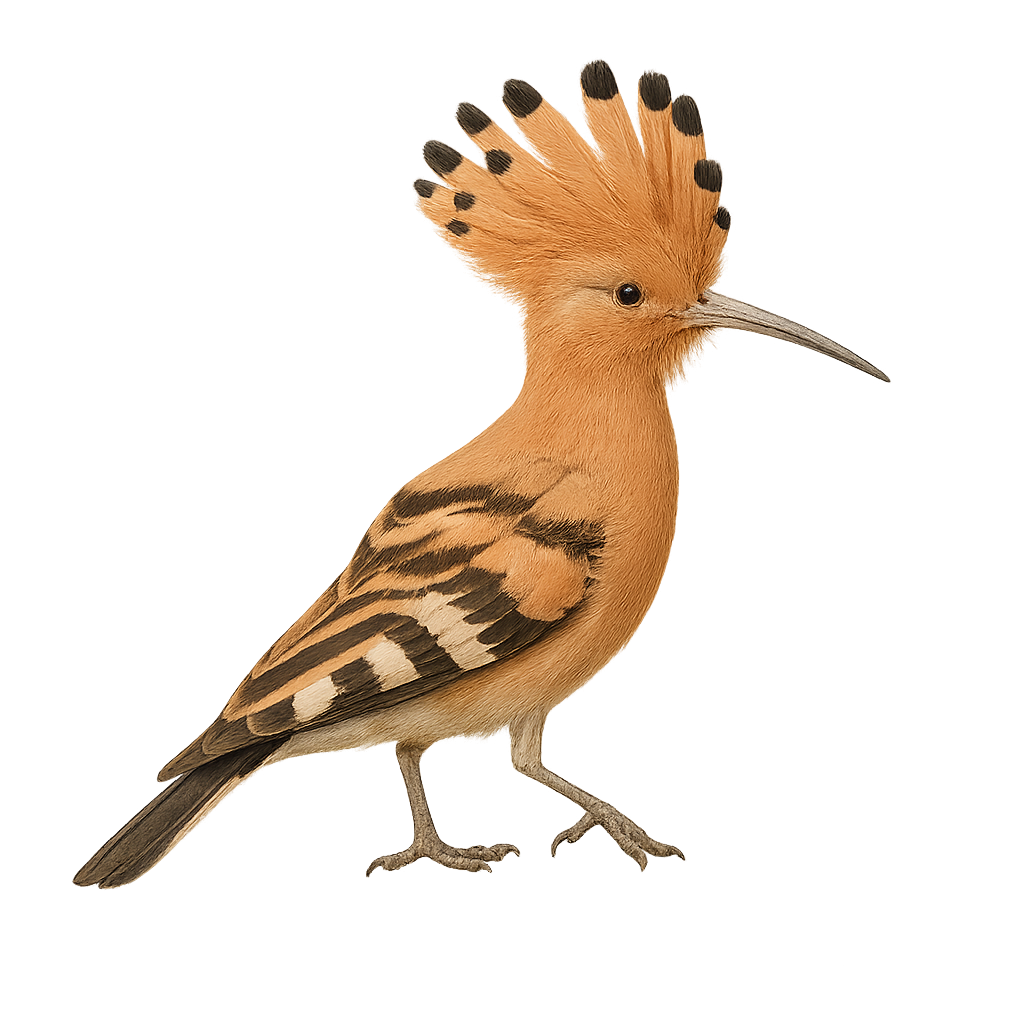Your wildlife photography guide.
Explore the african hoopoe in detail, study its behavior, prepare your shots.
Where to observe and photograph the african hoopoe in the wild
Learn where and when to spot the african hoopoe in the wild, how to identify the species based on distinctive features, and what natural environments it inhabits. The WildlifePhotographer app offers tailored photography tips that reflect the african hoopoe’s behavior, helping you capture better wildlife images. Explore the full species profile for key information including description, habitat, active periods, and approach techniques.
African Hoopoe
Scientific name: Upupa epops africana

IUCN Status: Least Concern
Family: UPUPIDAE
Group: Birds
Sensitivity to human approach: Suspicious
Minimum approach distance: 10 m
Courtship display: September to November
Incubation: 15-18 jours
Hatchings: September to December
Habitat:
Savannas, woodlands, grasslands
Activity period :
Primarily active during the day, with peak activity in the morning and late afternoon.
Identification and description:
The African Hoopoe, or Upupa epops africana, is a captivating bird, easily identified by its distinctive crest and black-and-white plumage patterns. It primarily inhabits the savannas and wooded areas of sub-Saharan Africa. This bird feeds mainly on insects, which it captures with its long, slender beak. The African Hoopoe is often seen probing the ground for food and is known for its distinctive "hoo-hoo-hoo" call. While generally solitary, it can be observed in small groups during the breeding season. Its adaptability to various habitats makes it a resilient species, although habitat loss remains a potential threat.
Recommended lens:
400 mm – adjust based on distance, desired framing (portrait or habitat), and approach conditions.
Photography tips:
To photograph the African Hoopoe, it is advisable to use a telephoto lens of 400mm or more to capture detailed images without disturbing the bird. Look for open areas where it is likely to forage, such as savannas or grasslands. Be patient and discreet, as this bird can be suspicious. Take advantage of early morning or late afternoon hours for soft, natural lighting. Remember to check your background to avoid distractions and set your camera for quick shots to capture its active behavior.
The WildlifePhotographer App is coming soon!
Be the first to explore the best nature spots, track rutting seasons, log your observations, and observe more wildlife.
Already 1 432 wildlife lovers subscribed worldwide

